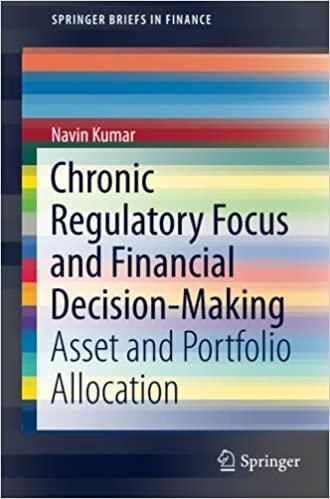Question
Maxine Peru, the CEO of Peru Resources, hardly noticed the plate of savoury quenelles de brochet and the glass of Corton Charlemagne 94 on the
Maxine Peru, the CEO of Peru Resources, hardly noticed the plate of savoury quenelles de brochet and the glass of Corton Charlemagne 94 on the table before her. She was absorbed by the engineering report handed to her just as she entered the executive dining room.
The report described a proposed new mine on the North Ridge of Mt. Zircon. A vein of transcendental zirconium ore had been discovered there on land owned by Perus company. Test borings indicated sufficient reserves to produce 340 tonnes per year of transcendental zirconium over a 7-year period.
The vein probably also contained hydrated zircon gemstones. The amount and quality of these zircons were hard to predict, since they tended to occur in pockets. The new mine might come across one, two, or dozens of pockets. The mining engineer guessed that 68 kilograms per year might be found. The current price for high-quality hydrated zircon gemstones was $7,275 per kilogram.
Peru Resources was a family-owned business with total assets of $45 million, including cash reserves of $4 million. The outlay required for the new mine would be a major commitment. Fortunately, Peru Resources was conservatively financed, and CEO Peru believed that the company could borrow up to $9 million at an interest rate of about 8%.
The mines operating costs were projected at $900,000 per year, including $400,000 of fixed costs and $500,000 of variable costs. Peru thought these forecasts were accurate. The big question marks seemed to be the initial cost of the mine and the selling price of transcendental zirconium.
Opening the mine, and providing the necessary machinery and ore-crunching facilities, was supposed to cost $10 million, but cost overruns of 10% or 15% were common in the mining business. In addition, new environmental regulations, if enacted, could increase the cost of the mine by $1.5 million.
There was a cheaper design for the mine, which would reduce its cost by $1.7 million and eliminate much of the uncertainty about cost overruns. Unfortunately, this design would require much higher fixed operating costs. Fixed costs would increase to $850,000 per year at planned production levels.
The current price of transcendental zirconium was $10,000 per tonne, but there was no consensus about future prices.7 Some experts were projecting rapid price increases to as much as $14,000 per tonne. On the other hand, there were pessimists saying that prices could be as low as $7,500 per tonne. Peru did not have strong views either way: her best guess was that price would just increase with inflation at about 3.5% per year. (Mine operating costs would also increase with inflation.)
Peru had wide experience in the mining business, and she knew that investors in similar projects usually wanted a forecast nominal rate of return of at least 14%.
You have been asked to assist Peru in evaluating this project. Lay out the base-case NPV analysis and undertake sensitivity, scenario, or break-even analyses as appropriate. Assume that Peru Resources pays tax at a 35% rate. For simplicity, also assume that the investment in the mine could be depreciated for tax purposes straight-line over seven years.
What forecasts or scenarios should worry Peru the most? Where would additional information be most helpful? Is there a case for delaying construction of the new mine?

Step by Step Solution
There are 3 Steps involved in it
Step: 1

Get Instant Access to Expert-Tailored Solutions
See step-by-step solutions with expert insights and AI powered tools for academic success
Step: 2

Step: 3

Ace Your Homework with AI
Get the answers you need in no time with our AI-driven, step-by-step assistance
Get Started


